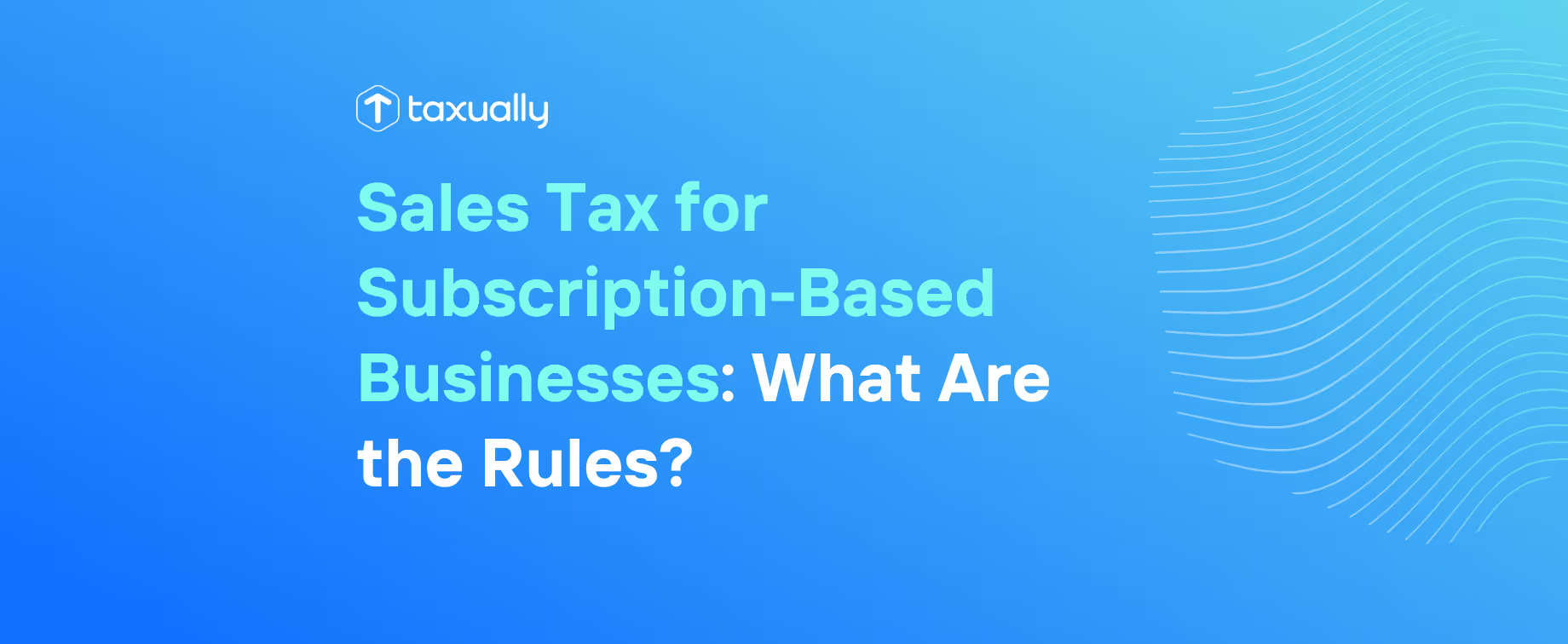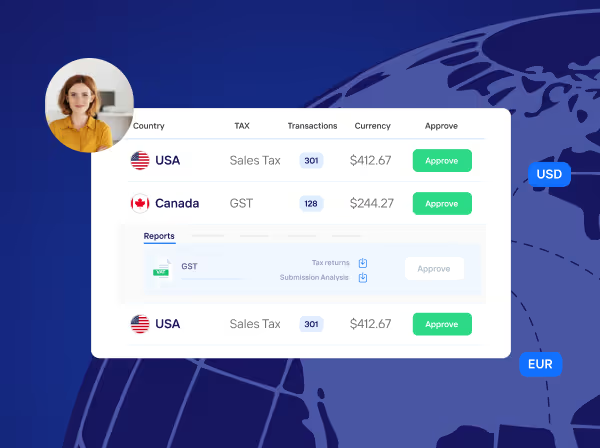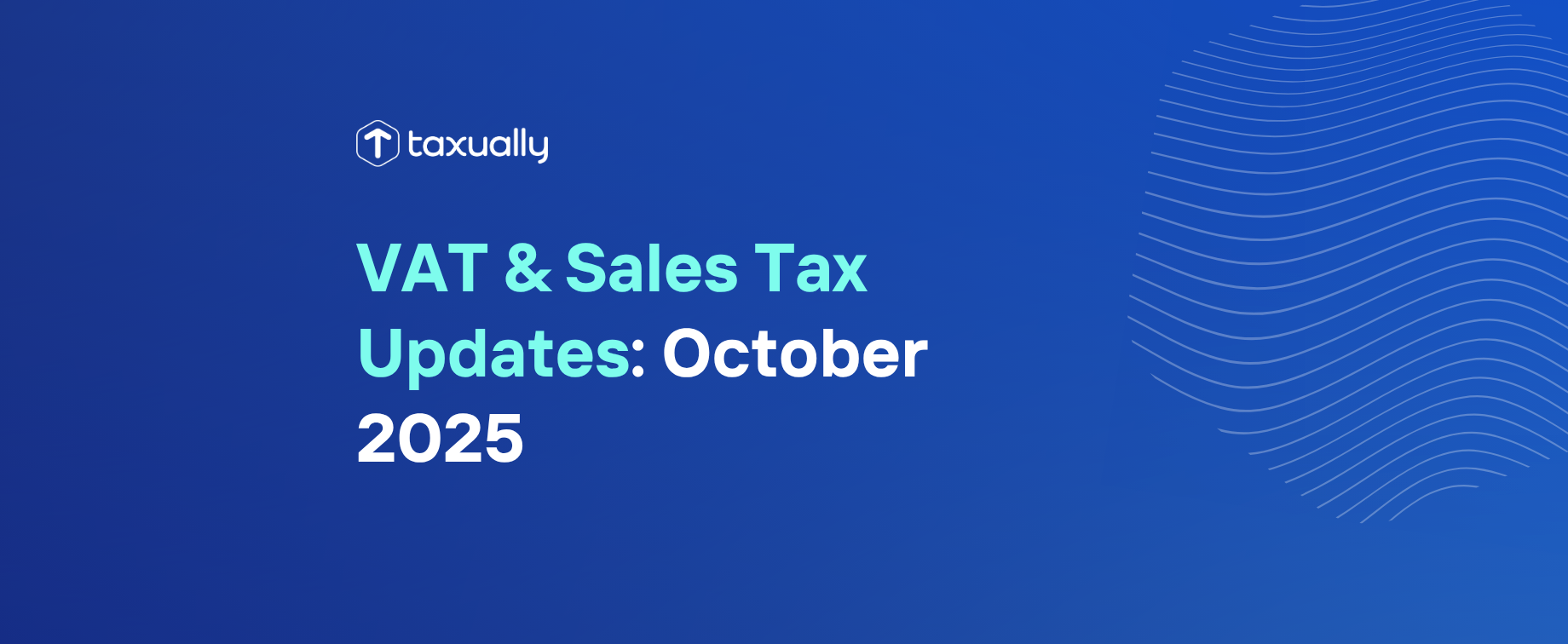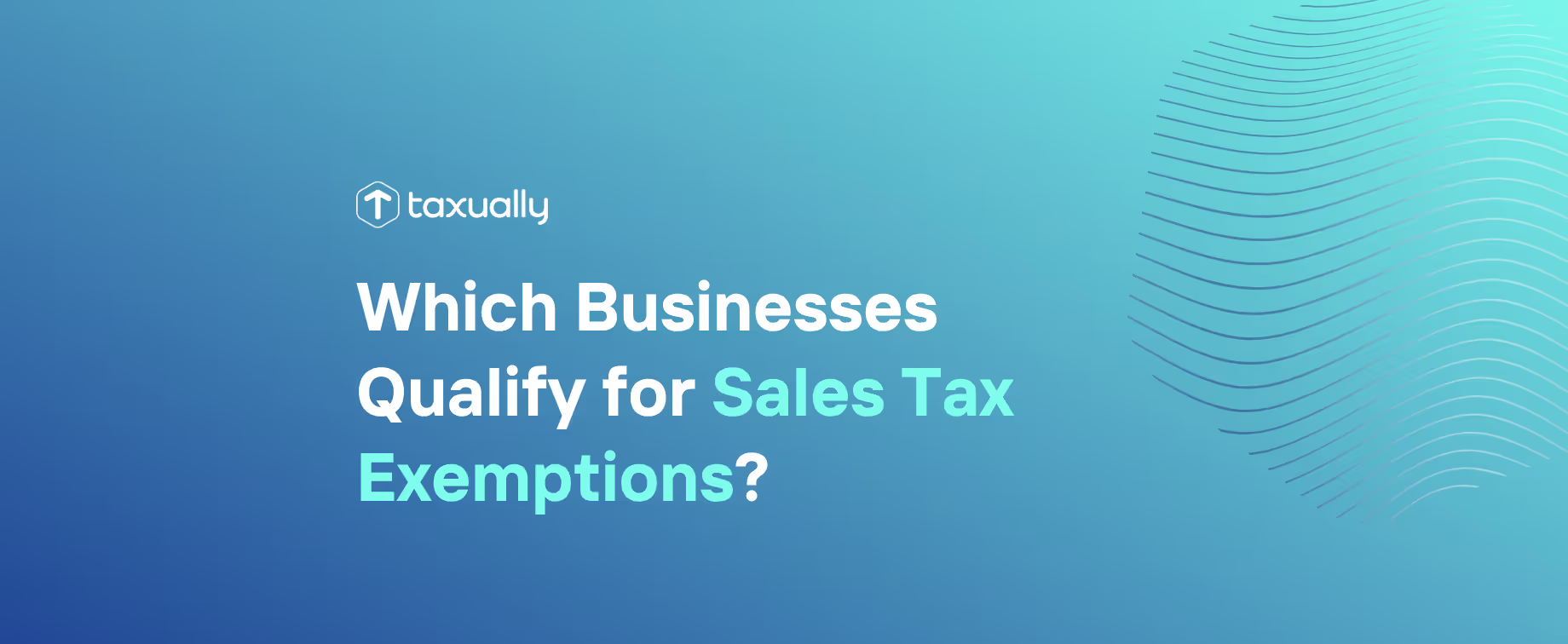Key takeaways
- Subscription-based businesses must monitor sales tax nexus and register in states where they exceed thresholds.
- Taxability varies by product type and location—especially for digital goods, SaaS, and hybrid offerings.
- Automating tax calculation and integrating with billing systems helps ensure accurate, scalable compliance.
The subscription economy is growing rapidly, with businesses offering everything from SaaS solutions and streaming services to monthly product boxes and digital content memberships. While these models offer recurring revenue and customer retention benefits, they also introduce unique challenges—particularly around sales tax.
If your business operates on a subscription model, it’s important to understand when and where you need to collect sales tax, how taxability varies based on the type of product or service, and how to stay compliant across multiple jurisdictions.

Understanding nexus: where you must collect sales tax
Nexus is the connection between a business and a state that creates a sales tax obligation. There are two main types of nexus:
- Physical nexus: Triggered by having an office, employee, warehouse, or inventory in a state.
- Economic nexus: Triggered by exceeding a certain threshold of sales revenue or transaction volume in a state.
Since the South Dakota v. Wayfair decision in 2018, nearly every U.S. state has adopted economic nexus rules. Many states have implemented nexus thresholds and require you to register, collect, and remit sales tax once your sales exceed $100,000, 200 transactions, or $500,000 in annual revenue—even if you have no physical presence there.
Determining taxability: what are you selling?
Sales tax rules differ not only by state, but also by product type. Whether or not your subscription is taxable depends on what you’re offering and where your customer is located.
Common categories:
- Physical goods (e.g., subscription boxes for food, cosmetics, books): Generally taxable in most states.
- Digital goods (e.g., streaming content, e-books, software downloads): Taxability varies. Some states tax digital goods (e.g., Pennsylvania, Washington), while others do not.
- SaaS (Software-as-a-Service): Taxability varies significantly by state. SaaS is taxable in places like New York, Texas, and Massachusetts, but not currently taxed in California.
- Hybrid offerings (e.g., physical product plus digital content): Some states require businesses to allocate the taxable and non-taxable portions of the subscription.
It’s essential to classify your offerings correctly and monitor changes in state tax rules to avoid under- or overcharging tax.
Recurring billing and prepaid plans
With subscription models, businesses typically charge customers on a recurring basis—monthly, quarterly, or annually. Each of these billing cycles is treated as a separate transaction for sales tax purposes.
Important considerations:
- Monthly/quarterly billing: Sales tax should be applied to each transaction based on the rules in effect at the time of billing.
- Annual or prepaid plans: Some states require tax to be collected upfront on the full amount, while others permit taxation over the payment schedule.
- Cancellations and refunds: If a customer cancels partway through a subscription, sales tax adjustments or refunds may be required depending on state rules.
- Customer location changes: If a subscriber changes their shipping or billing address, you may need to update the tax rate and sourcing state.
Your billing system should be equipped to track subscription terms, handle cancellations, and apply appropriate tax treatments accordingly.

4. Shipping, handling, and bundled charges
Shipping and handling charges can be taxable depending on how they are presented and what is being shipped.
General rules:
- Separately stated shipping charges: Often exempt from sales tax if listed separately on the invoice (varies by state).
- Bundled charges: If shipping is bundled with taxable items (e.g., “$20 per month including delivery”), the full amount may be subject to tax.
- Digital/physical bundles: When digital services are bundled with physical goods, some states require prorating the tax based on the value of each item.
To ensure accurate tax calculation, it's recommended to itemize shipping and handling fees on invoices and clearly break down taxable versus non-taxable components of the subscription.
Compliance: registration, calculation, filing
Subscription businesses must be proactive in managing sales tax compliance across states. Manual tracking and rate application can lead to costly errors or audit risks.
Compliance steps:
- Register in states where you have nexus
- Use automated tax calculation software to apply the correct rate per item, location, and customer type
- File returns and remit tax payments according to each state’s schedule (monthly, quarterly, or annually)
- Maintain audit-ready records, including transaction history, exemption certificates, and filing confirmations
- Monitor thresholds and legislation changes to stay compliant as you grow
Subscription businesses that operate nationally or internationally will benefit from integrating tax engines with billing and CRM systems to automate and streamline compliance.
Common pitfalls to avoid
Sales tax compliance is a common source of risk for subscription-based businesses. Key areas to monitor include:
- Failing to register after surpassing a state’s nexus threshold
- Misclassifying products or services as taxable or non-taxable
- Incorrectly taxing or failing to tax customers who move between states
- Applying tax to exempt customers (e.g., non-profits or resellers) who have provided valid documentation
- Relying solely on billing systems without dedicated tax automation
A periodic review of your tax process—especially as your business expands—is critical to identifying and addressing these risks early.
Emerging trends and the future of sales tax on subscriptions
Sales tax regulations continue to evolve, especially in areas such as SaaS and digital goods. Several key trends are shaping the compliance landscape:
- More states are moving to tax SaaS and digital subscriptions that were previously exempt.
- States are refining how they handle hybrid or bundled product offerings.
- Advanced tax automation tools and APIs are making real-time tax calculation more accurate and scalable.
- Some marketplaces (e.g., app stores) are required to collect tax on behalf of sellers, but this does not always apply to direct subscriptions.
Staying current with these changes—and adopting technology that can adapt to them—is essential for subscription businesses looking to scale compliantly.
Conclusion
Sales tax for subscription-based businesses is far from straightforward. With recurring billing, variable taxability, and expanding economic nexus laws, businesses need a proactive and well-integrated approach to compliance.
By taking the following steps, you can minimize risk and ensure ongoing compliance:
- Track and manage nexus thresholds
- Accurately classify your products and services
- Automate tax calculations and integrate with your billing system
- Stay updated on changing tax laws
- File returns on time and keep complete documentation
As your subscription model grows, your sales tax obligations will evolve. Planning for that growth now—through the right tools, partners, and processes—will save time, reduce errors, and protect your bottom line.
Do you need help with your sales tax compliance? Book a free call with one of our sales tax experts to find bespoke solutions for your business, optimize your tax costs, and reach millions of new potential customers.
Frequently asked questions
New Year's Day - 1/1/2024Memorial Day - 5/27/20244th of July - 7/4/2024Labor Day - 9/2/2024Thanksgiving Day - 11/28/2024Day after Thanksgiving - 11/29/2024Christmas Eve - 12/24/2024Christmas Day - 12/25/2024
Do I need to collect sales tax on all subscription products?
Not necessarily. Taxability depends on the product type and the customer’s location. Physical goods are generally taxable, while digital goods and SaaS vary by state.
How often do I need to apply sales tax to recurring subscriptions?
Each billing cycle (monthly, quarterly, annually) is treated as a separate taxable transaction. Some states require upfront tax collection for prepaid plans.
What happens if a subscriber changes their billing or shipping address?
You may need to adjust the sales tax rate and sourcing state, as tax obligations are based on the customer’s current location.


















